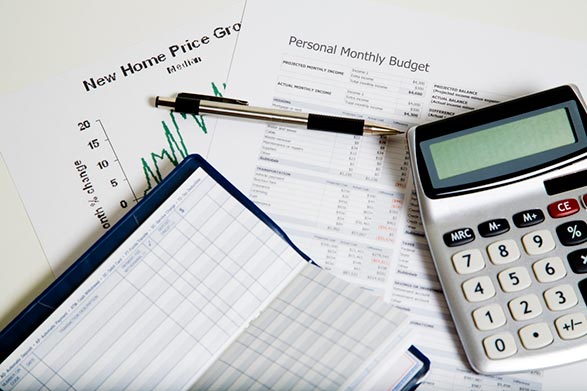One of the critical aspects of a Chapter 13 bankruptcy is the payment plan. In fact, what makes a Chapter 13 different from a Chapter 7 bankruptcy is making monthly payments to creditors for a period of time. Not all monthly payments are created the same.
The amount of your monthly payment depends on a number of factors. How is the Chapter 13 payment plan calculated? You and your skilled Las Vegas bankruptcy attorney can work together to develop a payment plan that’s tailored to your situation. Here’s what to know about how to calculate your payment plan in a Chapter 13 bankruptcy.

To calculate your monthly payment amount in a Chapter 13 bankruptcy, calculate your income for the six months before your bankruptcy filing. Deduct allowable expenses to determine your disposable income.
Pay your priority debtors and any secured debts that you want to keep after the bankruptcy. Add an amount to pay your unsecured creditors at least as much as they would receive if you filed a Chapter 7 bankruptcy. The total amount is your monthly payment amount.
A determination of your Chapter 13 monthly payment amount starts with a determination of your income. The court looks at your income from the six months before your bankruptcy filing. You must provide proof of your income for the period of time before you file. If bonuses or other unusual circumstances impact your monthly income, that’s okay, but you must account for the variances in the calculation of your monthly payment.
To do a Chapter 13 bankruptcy filing, you need to have regular, predictable monthly income. Sources of income include hourly pay from work, salary pay, bonuses, tips, and self-employment income. Other sources of income you can use include alimony payments, social security, disability payments or unemployment payments.
It’s okay if your income varies. Your monthly payments might even vary if your income fluctuates. Once you determine your income, you can proceed to determine what expenses and payments apply to determine your final Chapter 13 calculation.
Of course, you can’t pay your entire income to your bankruptcy payment. You have living expenses. A Chapter 13 filing leaves you room to make your payments and meet your living needs during the length of your payment plan. To determine your monthly payment plan, you deduct your allowable expenses from your income.
Sometimes, your expenses are your actual expenses. In those cases, you deduct the exact amount that you spend. For example, for mortgage or rent, you include the actual dollar amount that you pay for your mortgage or your rent. What’s normal in your area doesn’t matter. Instead, you use your own, personal cost in that category.
Other types of expenses are fixed depending on what’s set by law. You look at a chart created by the government, and that’s the amount that you’re allowed to claim for that expense. Utilities are an example of a cost that’s fixed. It doesn’t matter if your expenses are unusual or extraordinary, you can only claim the amount that’s fixed according to law.
Once you deduct your expenses from your income, you’re left with your disposable income. Your disposable income gets applied to your debts according to priorities. To calculate your Chapter 13 monthly payment amount, you compare your disposable income to your debts. Creditors file a Proof of Claim document that verifies the amount they believe that you owe them.

Your debts are the next step in determining your monthly payment amount. There are some debts that you must pay completely in a Chapter 13 bankruptcy. You must get completely up to date in your income taxes, alimony, child support, and any wages you owe people who work for you. Your monthly payments must include 100 percent of the amount that it takes to pay priority debts in full completely.
The next step in determining your Chapter 13 monthly payment is to think about what types of secured debt that you want to keep. Your house and your car are two of the most common types of secured debt that you may want to hang onto after a Chapter 13 bankruptcy.
To keep secured debt in bankruptcy, you need to pay enough each month that you become current in any amounts that are past due. You must add these amounts to your monthly payment in your bankruptcy filing.
The final category of debts is your unsecured debts. Your unsecured debts are things like credit cards, medical bills, personal loans, and other types of unsecured debts. For this category, you must pay at least as much as your creditors would get if you filed for Chapter 7 bankruptcy. You should figure out how much the creditors would get under a Chapter 7 filing, and you must pay them at least that amount.
Related: What Bankruptcy is Right for You?
In addition to calculating the amount of your payments, you also need to determine the duration of your payments. To complete a Chapter 13 bankruptcy, you need to make monthly payments for either three or five years. Whether you pay for three years or five years depends on your income.
If your income is less than the state median, you pay for three years. If your income is more than the state median, you pay for five years. To complete your Chapter 13 bankruptcy, you make your monthly payment for the number of years that your income dictates. Once you make the last payment, you can discharge your remaining unsecured debts and complete your bankruptcy.
Are you wondering how much your Chapter 13 monthly payment will be? Our bankruptcy lawyers in Las Vegas can help. Let our team review your case and discuss your options to help you understand the law and create the best possible plan for your future. Call us today to talk about your situation.